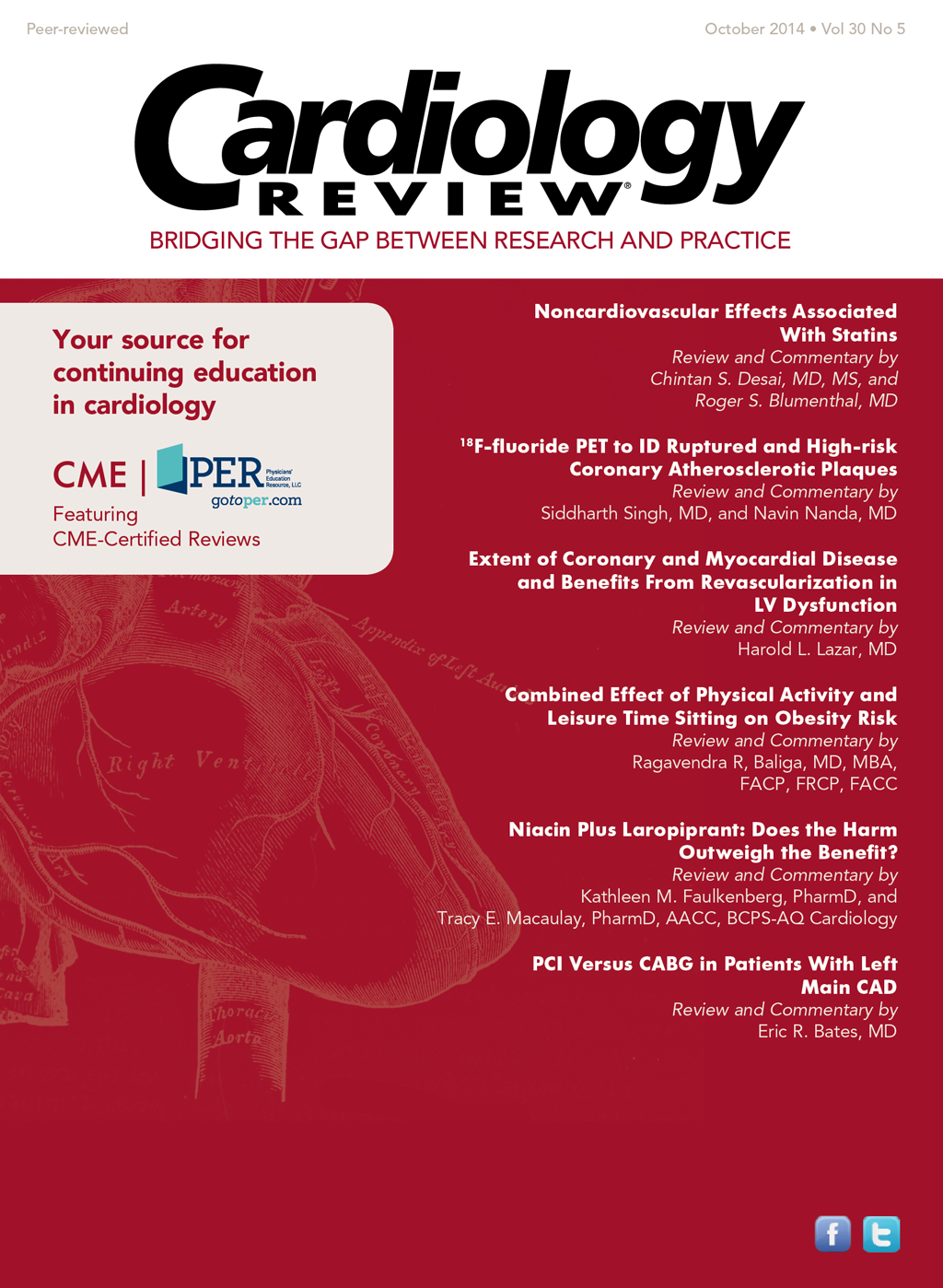Publication
Article
Cardiology Review® Online
Noncardiovascular Effects Associated with Statins
This review presents up-to-date evidence regarding the noncardiovascular effects associated with statins, both adverse and beneficial.
Study Details
The authors searched PubMed for articles published from November 4, 1994, to March 20, 2014. The highest grade of evidence (randomized controlled trials, meta-analyses, and systematic reviews) was prioritized. Conclusions were based on the knowledge available in such reports and resources were not available in such reports to evaluate the extent of hidden data.
Myopathy is defined as muscle pain with an elevation in the creatine kinase (CK), and can be classified as myositis if CK is greater than 10. the upper limit of normal; rhabdomyolysis generally refers to having a CK elevation greater than 40. the upper limit of normal.
1
Myalgias are defined as muscle pain without an elevation in the CK. In the Cholesterol Treatment Trialists’ collaboration meta-analysis of 26 statin trials, the excess risk of myositis with statin compared with placebo was 0.5 per 1000 patient-years (5 in 10,000 per year) and the excess risk of rhabdomyolysis was 0.1 per 1000 patient-years (1 in 10,000 per year).
2
Many of the rhabdomyolysis events occurred in patients allocated to simvastatin 80 mg/d, a dose that is no longer recommended. Approximately 60% of rhabdomyolysis events occurred when statins were used concurrently with agents known to interact with statins, such as gemfibrozil.
3
Clinical trials and meta-analyses have demonstrated no increase in myalgias with statins compared with placebo.
3-5
In a meta-analysis of 13 statin trials (N = 91,140 patients), statin use resulted in a 9% increased risk of incident diabetes.
6
The increased risk of diabetes is confined primarily to individuals with preexisting risk factors for diabetes (
>
2 components of the metabolic syndrome). In the Justification for the Use of Statins in Primary Prevention (JUPITER) study, a total of 486 patients were newly diagnosed with diabetes, and 77% of those patients had impaired fasting glucose at baseline.
7
All incident diabetes events occurred in patients who had at least 1 of the following risk factors: impaired fasting glucose, body mass index >30 kg/m
2
, metabolic syndrome, or glycated hemoglobin >6.0%.
Available data suggest that moderate- and high-dose statins are associated with modestly increased levels of transaminases but that clinical hepatotoxicity is an exceedingly rare event.
8-10
The FDA recommends checking liver chemistry tests prior to initiation of statin therapy, but routine monitoring in the absence of symptoms is no longer recommended unless new medications known to raise statin blood levels are prescribed for long-term use.
High-quality evidence is not available at this time to assess the effect of statins on the incidence of cataracts, acute kidney injury, and fatigue. Randomized trials have reported no increase in cognitive dysfunction with statins compared with placebo,
11,12
and well-conducted systematic reviews suggest a decrease in long-term dementia and Alzheimer’s disease.
13,14
Contrast-induced nephropathy (CIN) may occur following the administration of iodinated contrast during coronary angiography. The Novel Approaches for Preventing or Limiting Events (NAPLES) II study randomly assigned patients with chronic kidney disease undergoing elective coronary angiography to a single dose of atorvastatin or placebo, and reported a 78% reduction in incident CIN with atorvastatin.
15
Similar results were reported in a randomized, placebo-controlled trial with high-dose rosuvastatin for the prevention of CIN.
16
A meta-analysis of 16 randomized, placebo-controlled trials reported a 23% relative risk reduction in incident pancreatitis with statins.
17
The JUPITER trial also reported a significant reduction in venous thromboembolism with rosuvastatin
18
compared with placebo, but this finding was not confirmed in a meta-analysis.
19






